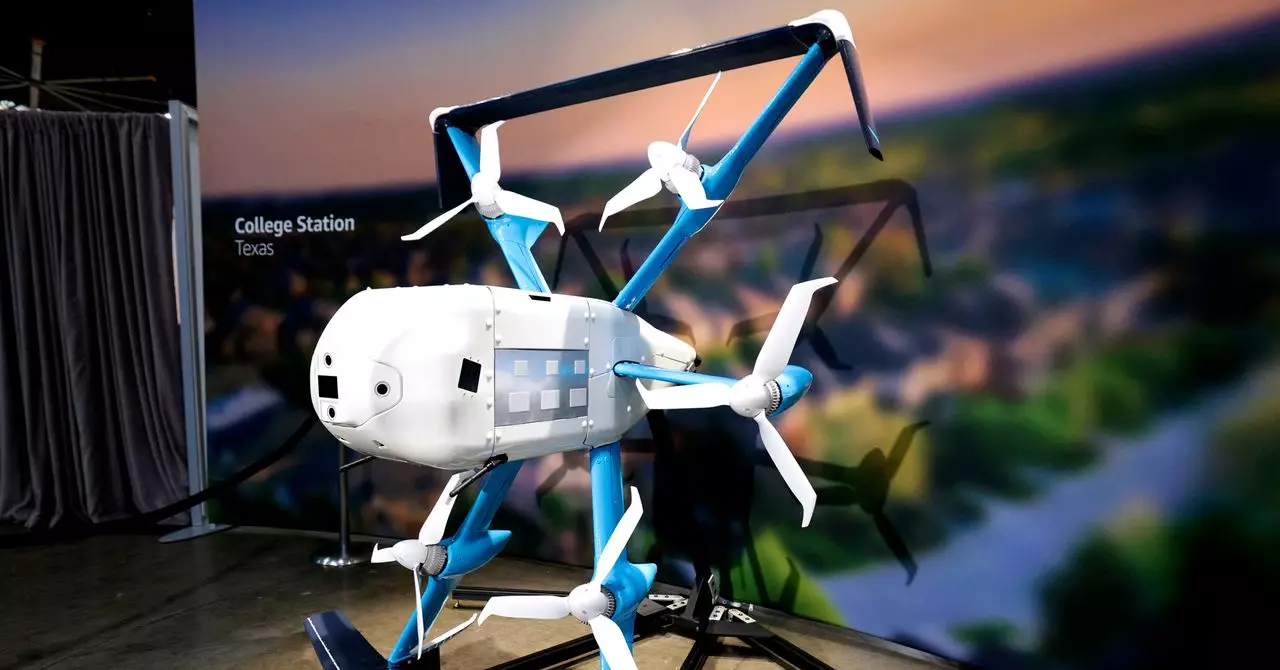As drone delivery services become increasingly mainstream, the introduction of such operations in residential areas has sparked a complex myriad of reactions. While tech enthusiasts view drone deliveries as a breakthrough in convenience, several communities find themselves grappling with the unintended consequences of this technological advancement. The unfolding story in College Station, Texas, epitomizes this conflict, revealing insights into local sentiment, regulatory challenges, and the transformative potential of drones.
The deployment of drone services, particularly by companies like Amazon, has resurfaced community concerns that echo the criticisms faced during previous technological shifts. As drone flights commenced in College Station, the immediate reaction from nearby residents was one of discomfort and distress due to the incessant noise generated by the aerial devices. Such noise, reminiscent of the uproar generated by earlier innovations like lawnmowers, reflects a typical societal pushback against disruptive technologies.
Residents expressed their dissatisfaction vocally to city officials, hoping for some form of regulation to mitigate the disturbances. However, Texas lawmakers have largely limited local governments’ power to govern drone operations, leaving officials seemingly helpless in addressing the noise complaints. This ban on regulation raises questions about the balance between innovation and public welfare, as many communities now feel disenfranchised from decision-making processes concerning technology that quite literally hovers over them.
Despite the outcry, city leaders in College Station have suggested possible relocation options for Amazon’s drone operations, including a site near a mall approximately four miles away. However, as of late last year, Mayor John Nichols indicated that Amazon had not provided updates regarding its relocation plans. The ongoing uncertainty has bred frustration among residents, highlighting a significant lack of communication from Amazon, which may have exacerbated local tensions.
Local real estate agents have noticed conflicting community sentiments. Some residents, such as Kim Miller, argue that concerns around noise pollution and property values are exaggerated. Miller, who has personally interacted with drones, views them as a harbinger of progress, suggesting that discomfort often accompanies innovative reforms. Conversely, other community members remain apprehensive, perceiving Amazon’s drone operations as an imposition on their daily lives.
The divergence in resident opinions indicates a microcosm of the larger debate surrounding drone technology. Real estate professional Raylene Lewis illustrates that curiosity about drone deliveries may counteract some apprehensive perspectives. In her experience, potential homebuyers show a keen interest in whether residences fall within Amazon’s delivery range, reflecting a growing acceptance. This perception shift exemplifies how technological conveniences can lure individuals even as they recognize the associated nuisances.
However, the incidents of drone malfunctions—two concerning crashes attributed to environmental conditions and operator error—have heightened anxiety within the community. These incidents underscore a crucial aspect of drone technology: its potential to become a source of local risk rather than simply a convenience. The operational pause initiated by Amazon, reportedly for software updates, further underscores the complexities involved in deploying this technology within residential neighborhoods.
While College Station grapples with these immediate issues, larger companies like Wing are also navigating federal approval processes in Texas and Florida to expand their delivery capacities. The broader implications of drone technology strategies will inevitably affect communities nationwide. As operators learn from the pushback experienced in College Station, they may adapt their operations to better accommodate local concerns and foster progressive acceptance.
As drones become central to modern logistics, the challenges faced by College Station residents highlight an essential conversation about community engagement and the seamless integration of technology into daily life. The ongoing dialogue serves as a critical reminder that while innovation can offer significant advantages, it must also be responsibly managed to respect and consider the wishes of the communities in which it operates. As we look toward an increasingly automated future, the lessons learned from these early encounters may guide more harmonious relationships between technology firms and the public.

